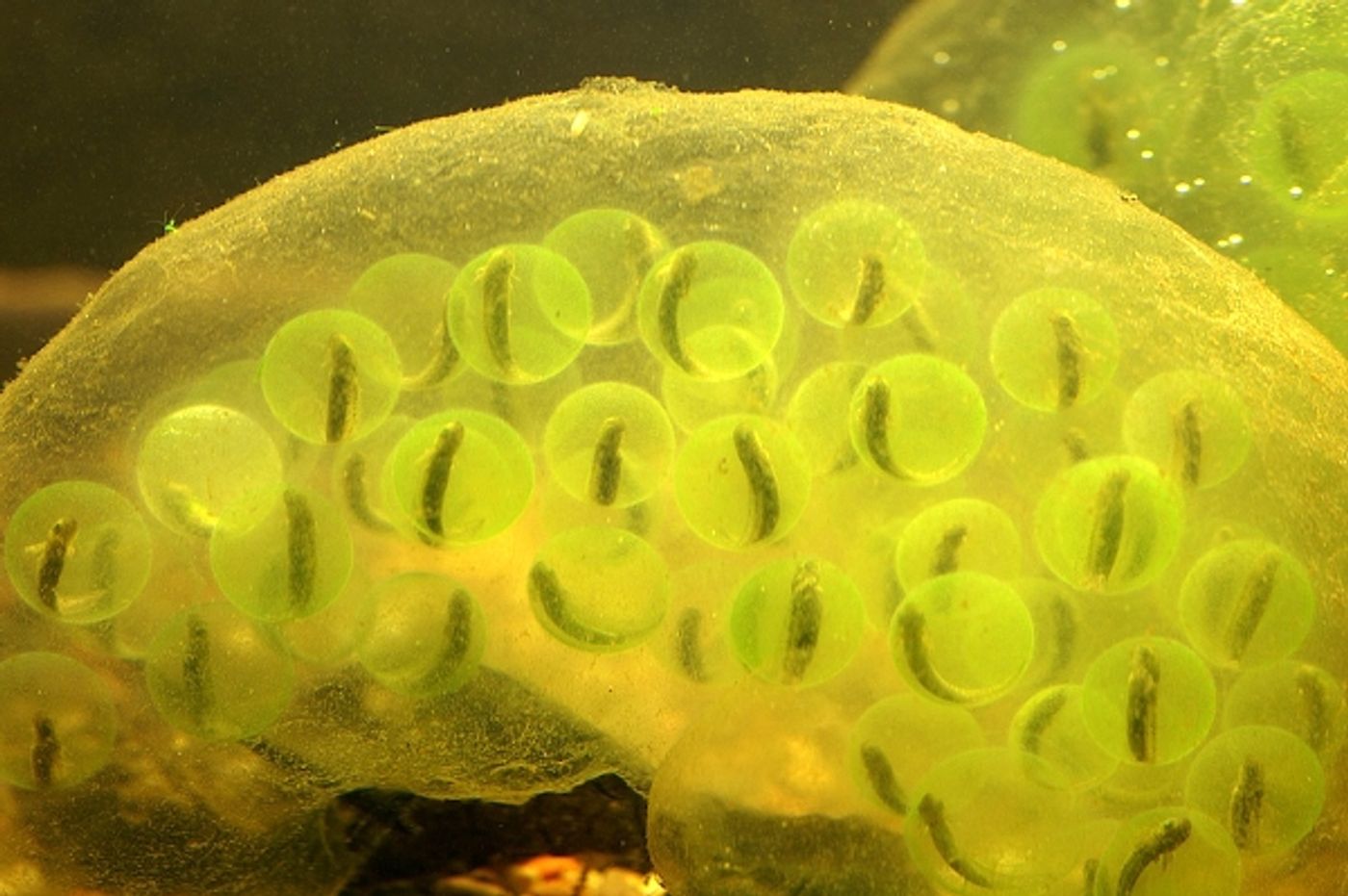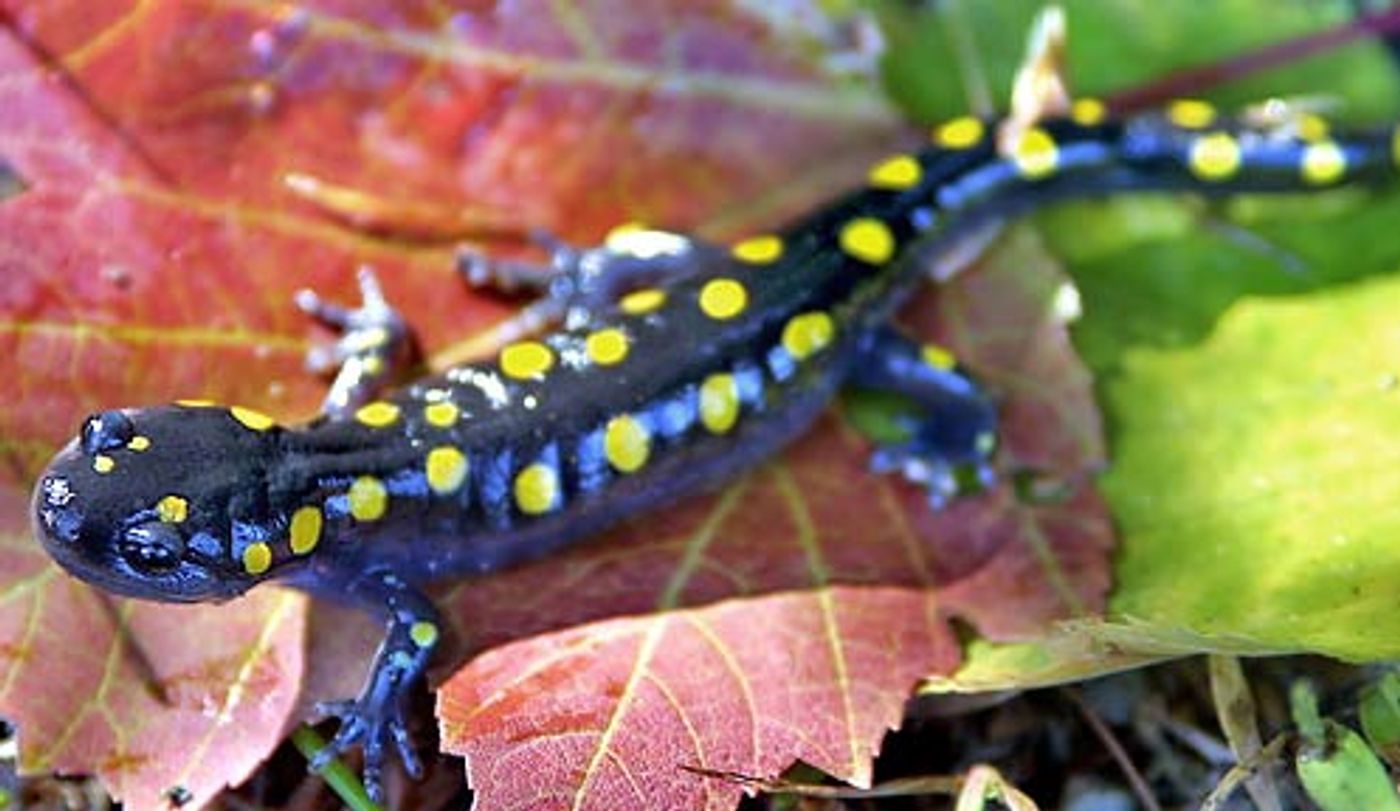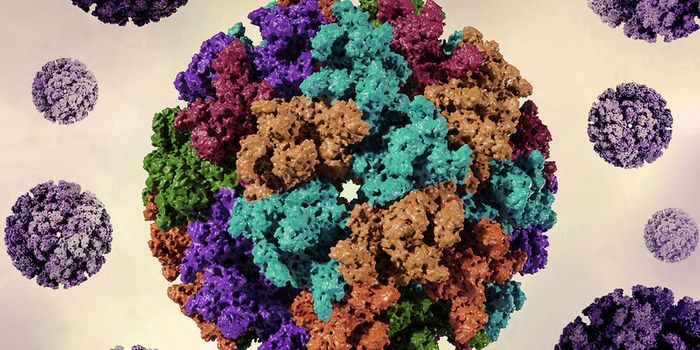A salamander and its algae
Have you ever seen the TV show The Odd Couple? The sitcom from the 1970s (and its 2015 reboot) follows the ups and downs of two very different roommates. There are plenty of odd couples in the microbial world, and one of the oddest is between the photosynthetic alga Oophila amblystomatis and the spotted salamander Ambystoma maculatum.
O. amblystomatis is a single-celled, flagellated, chlamydomonad algae. Its roommate, the spotted salamander (also known as the yellow-spotted salamander), spends most of its time underground, but it breeds each spring in pools of water. The spotted salamander lives in the eastern US and Canada - the little guy is also the state amphibian of Ohio and South Carolina.
This odd case of symbiosis was observed more than a century ago. Curiously, the green algae grow inside the egg cases of the spotted salamander, giving the eggs a green color. (Green eggs and ham, anyone?) The salamanders deposit their eggs in water, and the algae enter the eggs. From there, this case of symbiosis gets even more odd. Not only do algae live inside the salamander’s eggs, they also live inside the cells of the developing embryos and adult salamanders!
This type of endosymbiosis is very rare in vertebrates because the immune system usually destroys any potential endosymbionts, these relationships are more common between algae and corals, for example. In that scenario, the algae uses photosynthesis to make nutrients for themselves and also for the coral.
The relationship between O. amblystomatis and the salamander isn’t so clear cut - it’s not totally clear how each individual benefits. However, eggs that contain algae hatch more synchronously and have lower levels of embryonic mortality (always a good thing). The embryos themselves also appear to help the algae grow - once the baby salamanders hatch, the algae don’t continue to grow in the egg cases.
It’s tough having a roommate, and new research shows how each symbiont deals with the relationship, a relationship that seems to be a bit stressful for the algae.
For one, the intracellular algae overexpress a set of heat shock proteins, indicating that they experience oxidative and osmotic stresses. They also express proteins related to autophagy. Overall, 6 times more genes are differentially expressed in the algae than in the salamander.
The intracellular algae also change the way they produce energy. Instead of relying mainly on photosynthesis, the algae switch over to fermentation. This may be because once the algae are inside a salamander cell, there’s not enough light for photosynthesis - even in the partially translucent eggs. It may also be a response to sulfur deprivation and the hypoxic conditions found inside the eggs.
Here's an interesting question - how the heck do these algae get into the salamander’s cells in the first place? Salamander cells that contain algae actually produce up to 5 times more lipoprotein-related protein 2, a receptor protein that triggers endocytosis. However, there’s no evidence of a host membrane surrounding the intracellular algae. This means that, if the algae do enter the salamander cells by endocytosis, they must escape or degrade their host-derived vesicle.
Most of the time, when a microbe enters an animal cell, the microbe is killed or the animal cell undergoes apoptosis - neither of which are conducive to a symbiotic relationship. In this case, however, the salamander cells don’t seem to mind housing the algae. This suggests that the salamander’s immune system doesn’t recognize the algae.
Sure enough, a handful of genes that are associated with the NF-κB pathway are downregulated in salamander cells that contain algae. In vertebrates, this pathway is important for mounting an immune response. Some researchers even think that the intracellular algae may help prime the embryonic salamander’s immune system.
Neat!
Sources: eLIFE, Nature News, PNAS, EurekAlert, National Wildlife Federation










